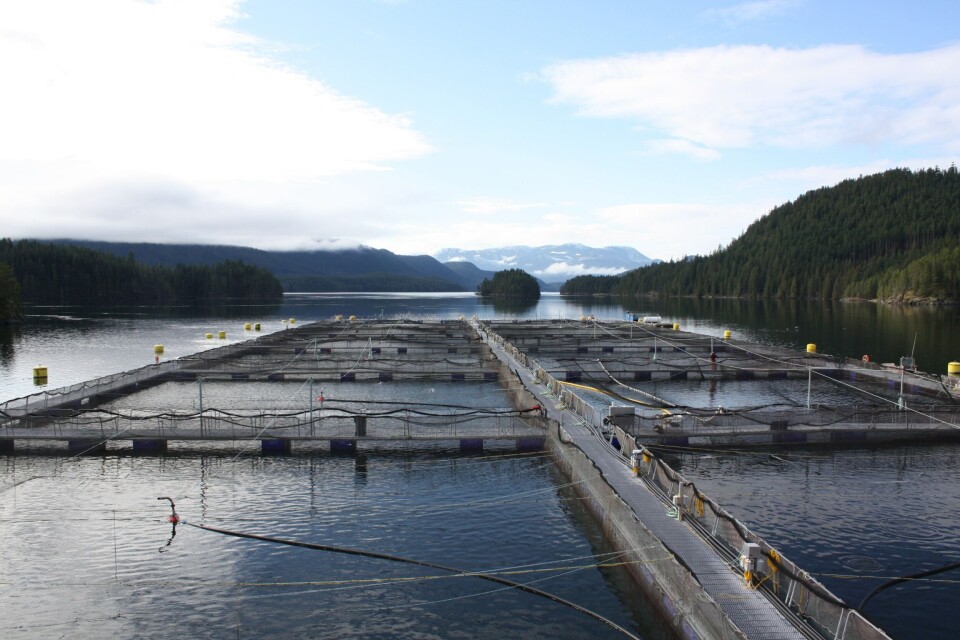
World seafood market to be dominated by farmed fish by 2030
Mr. Asche was introduced to the meeting attendants by another internationally respected professor and seafood economist, Dr. Gunnar Knapp of the host organization, the Institute for Social and Economic Research (ISER) at the University of Alaska Anchorage (UAA). The university’s mission is “to discover and disseminate knowledge through teaching, research, engagement and creative expression”. The title of professor Asche’s talk was, "Global Seafood Markets in 2030: Dominated by Aquaculture with Wild Fish as Niche Market Products?" Gunnar Knapp explained that the two of them have met repeatedly at international fisheries conferences. Asche was recently in Kodiak to speak to fishermen there, and made the journey to Anchorage for the ISER talk.
The UAA provided a copy of the presentation by professor Asche available on its web site, along with pictures supplied by Knapp and Asche with the following captions, respectively;
- “Alaska fishermen must deal with weather, uncertain supply and delivery challenges”
- “Advantages of farmed fish can include stable quantity and product along with a predictable supply chain”
Some of the highlights in professor Asche’s presentation included the following;
- Pointing out that the world’s oceans and waterways are greatly underutilized, he suggested that
- Increasingly, land-based technologies are adopted to use this resource
- Offshore drilling
- Minerals
- Aquaculture is the “food production” arm of this development
- Aquaculture is farming while fisheries is our last large hunting industry
- Aquaculture is an old technology, but a revolution took place in the 1970s as one started to use knowledge from agro-sciences to domesticate, breed and feed fish
- Depending on assumptions, projected global demand for seafood is between 138 and 159 Million Tons (MT) by 2025.
- Aquaculture production would then need to be between 74 and 100 MT by 2025, an increase of 22 or 42 MT from 2008 levels
- There is very limited scope for known fisheries resources and thereby fisheries to increase the role of the oceans and waterways as a source of food
- Salmon in Europe is in a shop less than 3 days after it came out of the sea, and is freighted by truck
- First species with reliable delivery of good quality fresh fish independent of distance
- Aquaculture is the result of systematic R&D and innovation in water based food production systems
-
Expansion of aquaculture production is profitable because of lower production cost due to technical innovations
- Productivity growth
- Demand growth
- This is a necessary development if the world’s oceans and waterways are to be significant sources of food
-
But modern aquaculture brings new challenges;
- Aquaculture is also a new way of using the environment, and creates a set of environmental challenges
- Feed (the fish meal trap)
- Which is a good story that does not hold
- Local externalities
- Emissions
- Escapes
- In principle, the control with the production process that allow systematic R&D can also be used to address environmental externalities
- In practice, it depends on governance
- Increasingly, land-based technologies are adopted to use this resource
The professor finished his presentation with a few concluding points;
- Aquaculture production will continue to increase
- Because one have just started to adopt technology from agriculture, and there is a tremendous scope for further productivity growth
- As for all biological production processes, this creates environmental challenges
- Can be solved
- North-America and EU lags behind
- Aquaculture will be the clearly most important seafood production technology in 2030
- And the only reason why seafood continues to be an important source of animal protein
- Fisheries is not likely to feed more people
- The real issues is largely how to protect stocks and how to maximize value
- And poor management is likely to continue to be a problem in many parts of the world
-
But 2030 is too early to make all wild fish markets niche markets.
- But one are likely to see a segmentations into high value niche products and low price protein
Professor Asche went on to dispel the myth that aquaculture has caused the decline of wild forage species used to make fish food, and he posed the following question to the audience; “Will Alaska by then (2030) start to manage the wonderful resource that its coast line constitutes”?






















































